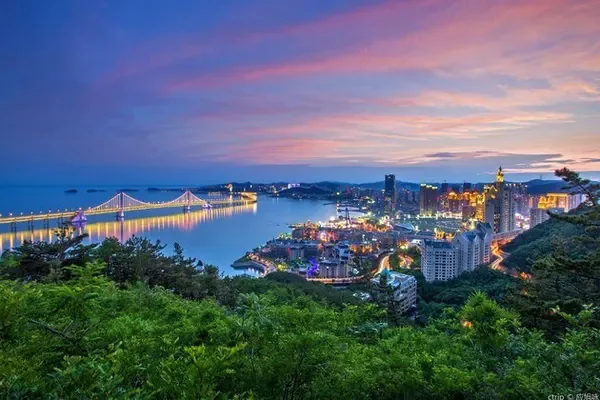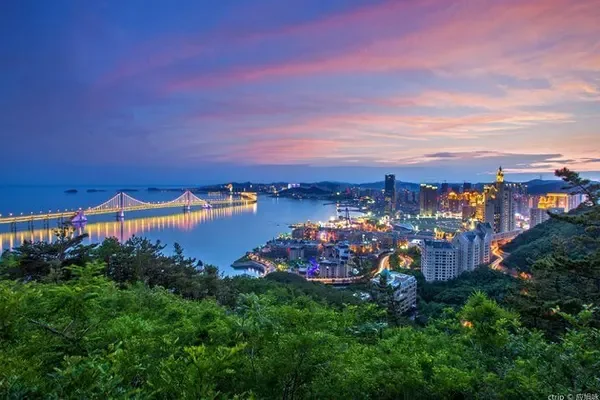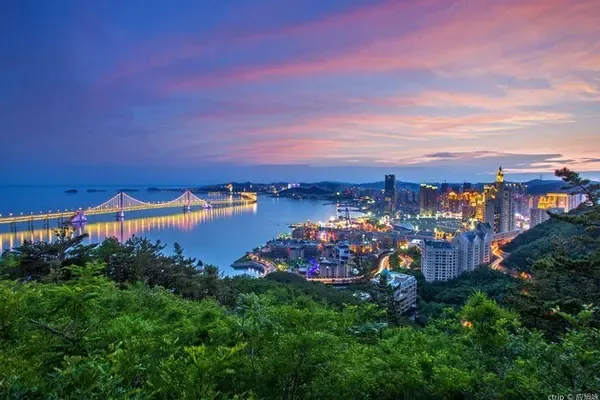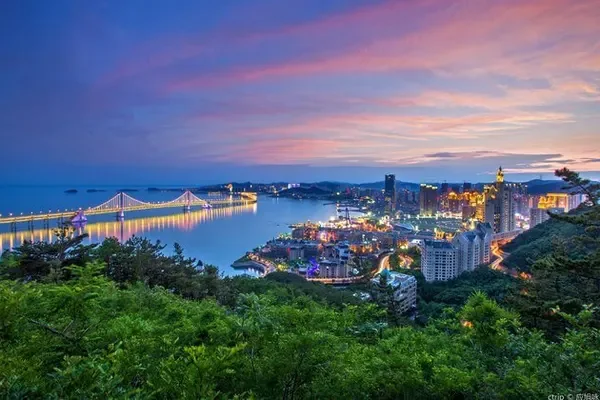The previous section talked about departure from Guangdong to Shigatse. This chapter starts from Shigatse and arrives in Kashgar, Xinjiang from the 14th day to the 25th day. Take the very tempting National Highway 219, there are many rivers, lakes, plateaus, meadows, deserts, icebergs and other most magnificent natural wonders and the most diverse cultural landscapes.
Day 14 Shigatse
Rest in Shigatse, 5A-level Tashilhunpo Monastery, stay in a Tibetan-style hotel with ghee flavor
Tashilhunpo Monastery means "Auspicious Sumeru Temple". It is the largest temple in the Houzang area, and it is also a large self-sufficient temple. The temple has handmade processing plants such as carpet factories. In addition to chanting scriptures, every lama in the temple Everyone has work to do.
The temple is built according to the mountain, and there are palace walls around it.

The entire temple faces south from the north, and the houses are row upon row in a well-proportioned manner, reflecting harmony and symmetry inadvertently.






The newly replaced curtains set off the red wall, which is extremely white and solemn.

Ghee-flavored Tibetan-style hotel



Day 15 Shigatse to Saga
From Shigatse to Saga, via Angren Langcuo Lake and Dagejia Geothermal Hot Spring, the journey is 494 kilometers

On the way to Saga



Angrin Langcuo Lake


Passing by the world's highest gap geothermal spring - Dagejia fountain, 5084 above sea level, I saw Tibetans sleeping next to the hot spring. We also went to join in the fun and soak our feet to relieve fatigue.



Day 16 Saga to Purang
Saga along the 219 to the direction of Ngari, passing Gang Rinpoche, and wandering to Pulan, the journey is 555 kilometers

Today is a long day of travel, starting to drive to the wildest snow region - Ngari area, the endless Himalayan snow-capped mountains on the roadside








Mani stone piles by the road



Mount Kailash stands majestically on the side of the road and can be seen from a distance

The adjacent Manasarovar Yumco is also one of the three holy lakes in Tibet, and the Namunani Peak is beside the lake.




Suaeda salsa on the saline-alkali land on the shore turns from yellow to red in autumn, which is very beautiful

Laang Co is adjacent to the holy lake Manasarovar, and the area between the two lakes is the only way to enter and leave Pulan County. Laang Co Lake is a brackish water lake. Because the lake water is not drinkable and there are few plants around the lake, it is called "ghost lake". Looking at Gang Rinpoche from the "Ghost Lake"

In the evening, we arrived at Purang County, a small border town between China, Nepal and India, which is the lowest-altitude county in Ngari.

It was only when I arrived in Purang that I found out that it is very close to New Delhi.

Day 17 Purang to Zanda
From Pulan to Zada County, the journey is 407 kilometers, and the track of the road has not been recorded.

Starting from Pulan, we will pass by yesterday’s scenery again, and look at Laangcuo and Gang Rinpoche from another angle


Gobi wind and sand, over several 5,000-meter-high mountains


From the high altitude to the low altitude soil forest city, enter the strange soil forest landform surrounding Zada - Zanda soil forest. Zanda is world-famous for its soil forests, castles, watchtowers, palaces, majestic, much more majestic than Xinjiang Devil City. Millions of years ago, it was still a river and lake, and the special landform formed by the erosion of flowing water, against the background of the psychedelic light and shadow on the plateau, is like a mythical world.












Day 18 Zanda to Doma
Say goodbye to Tulin City, go to Bangong Lake and Duoma Township, the journey is 444 kilometers

After crossing the Lamela Daban at an altitude of 5191, the section to Pangong Lake is full of snow peaks. There are basically no plants on the hillside, but the color is very rich, as bright as an oil painting.








black necked crane

Pangong Tso is an international lake at the junction of China and Indian-administered Kashmir. The strange thing is that although it belongs to the same lake, the water quality is different. In China, it is fresh water, which is sweet and sweet, and the water color is green. In Kashmir, the lake water not only becomes salty, And it stinks, not only people and animals can't drink it, but even fish can't be seen.







Use the off-road vehicle function to reach the rarely mentioned Lunma Zhuomu Lake. It is a salt lake with emerald green water and jewel-like colors. It is beautiful













Staying in Doma, the view at the entrance of the hotel


Day 19 Doma to Sanli Barracks
Walk the section of National Highway 219 with an average altitude of about 5 kilometers, and stay in a barracks in Shisanli. The journey is 468 kilometers, and it begins to enter no-man's land (except the barracks).

After leaving Doma, the highway has been passing through the Gobi. There are often no signals or people on the road for hundreds of kilometers, but the scenery is magnificent and charming.


longmucuo

After passing an abandoned military depot called "Spring Lake", the house was left in a large blue lake




There is a martyr cemetery near Kangxiwa, where more than 100 officers and soldiers who died in the Sino-Indian War are buried to worship the warriors



Day 20 Thirty Li Barracks to Yecheng
Thirty miles from the barracks to Yecheng County, the most difficult section of National Highway 219, with a journey of 366 kilometers

National Highway 219 is known as the plateau highway with the highest altitude, the most dangerous road, extremely poor road conditions and the worst environment in the world. It is a very challenging route. I walked from Shigatse, Tibet to Yecheng, Xinjiang for 7 days, with a journey of 2140 kilometers and an average altitude of more than 4500. Crossing Kunlun today and returning to the world will be unforgettable in this life!
The scenery at the entrance of the hotel early in the morning, the military restricted zone along the way, drones are not allowed.

This section of National Highway 219 is only open to traffic after 8:00 am and closes at 10:00 pm. One can imagine the steepness and difficulty of the road. Maza Daban is building an observation deck, where you can see the world's second highest peak, K2




Then pass through the Kudi road section comparable to the famous "Tongmai natural danger" on the Sichuan-Tibet highway

I can feel that the altitude is getting lower and lower. This is the most luxuriant section of water and grass. There are also wild camels, arriving at Yecheng, a small border city in Xinjiang, and returning to the world.



Day 21 Yecheng
Rest in Yecheng County
Deng Zanxian (zuǎn) Memorial Hall, Deng Zanxian was a native of Zijin, Guangdong. In the early Republic of China, he successively served as the governors of Wusu, Yecheng, Shufu, Moyu, and Bachu counties in Xinjiang. In 1962, a war broke out on the Sino-Indian border, and the border situation report in the ancient book "Yecheng County Chronicle" became an important basis for territorial disputes. Deng Yanxian was the author of this "Yecheng County Chronicle".


The Lost City of Sitia: The mysterious city of Sitia in history, the specific age has not yet been verified. It is the first building complex restored from raw soil in Xinjiang. By the way, it is not recommended.


Day 22 Yecheng to Taxian
From Yecheng to Taxian, via 5A Jinhuyang Scenic Area, the journey is 211 kilometers, the straight line on the map is estimated to be caused by no signal

Yecheng seems to be also known as the hometown of walnuts in China

Monument to the Starting Point of the Zero Kilometer of the Xinjiang-Tibet Line

The leaves of Jinhu Yanglin Park are not yet all yellow, and the time has not yet come, so rent a carriage and take a stroll


making pilaf



It passes through Shufu County, which was built with assistance from Guangzhou, and the name of the road can be seen.

Walking on the China-Pakistan Friendship Road at night, the road conditions are not what it used to be. The asphalt road is very good, the mountains are high, the snow-capped mountains are high, and the moon is high. I spent a different kind of National Day and Mid-Autumn Festival.
Day 22 Ta County
Taxkorgan, originally meaning Stone City, is located in the east of the Pamirs. "Pamir" means "roof of the world" in Tajik, and the plateau is 4000-7700 meters above sea level. The sculpture of an eagle in the center of the city is the totem of the Tajik nation.

Today there are horse races, song and dance performances, horse races and camel races. The horse race venue was built with assistance from Shenzhen.






Everyone dressed up to attend. This is the only white Tajik ethnicity in China. They are very handsome. They belong to the Europa race, the Indo-Mediterranean type. The men are handsome and handsome, and the women are charming and charming. The most distinctive feature is their big nose.





The stone city is built on a high hill, and there are multi-layered or broken or continuous walls outside the city, surrounded by snow peaks, and grassy beaches and rivers below. According to the introduction, this ancient city was abandoned in the Tang Dynasty and was once the capital of the Tang Jiepantuo Kingdom. Today, the prosperity and authority of the past are no longer seen, only the ruins and walls are silent in the setting sun.



The Golden Grass Beach is just under the stone city. Because the Taxkorgan River flows through here, there are abundant water and grass here, and cattle and sheep are everywhere. As the setting sun shines in the west, the green grass beach is golden, and the white yurts of the shepherds in the distance, and the flock of sheep are reflected against the blue sky.




In the evening there will be a bonfire party and song and dance performances

Day 23 Ta County to Kashgar
From Taxian County to Kashgar, along the China-Pakistan Friendship Road, the scenery is beautiful and the journey is 317 kilometers

Muztag Snow Peak, the father of the 7,546-meter iceberg, is building a gate in the scenic area, and it seems that it will soon be charged. If the weather is bad, I still go to see it. From time to time, there are still snowflakes, and it is a vast expanse of white.




The China-Pakistan Friendship Road has just been paved and is in good condition. There are many snow-capped mountains and lakes on both sides of the road. When I went to Ta County, I took the night road, so I didn't get to appreciate it. Now it takes half a day to make up for it.


Karakul Lake is located at the foot of Muztagh Peak. The China-Pakistan Highway passes by the lake, and the water surface reflects the majestic and mysterious Muztagh Peak.








When the winding road reaches an altitude of about 3,400 meters, it suddenly becomes clear. The snow peaks reflect the continuous mountains, and the white and soft Baisha Mountain and Baisha Lake are in front of you.




Oytak Red Mountain - Southern Xinjiang Flame Mountain

To Kashgar, enter the Id Kah Mosque



Kashgar County












Day 24 Kashgar
Kashgar means a jade-like place. It is the westernmost city in China. The main city is divided into two areas, the south and the north. The Renmin Road is the boundary. The south is a new area with many Han people; the north is an old city, which is the most worthwhile tourist area, the main streets of the old city almost all lead to the Id Kah Mosque

The most attractive thing about the old town of Kashgar is the atmosphere of life here, young people running and laughing on the street, old people chatting in teahouses, craftsmen knocking and knocking in shops along the street; Real ingredients such as crock soup, high-quality and cheap food, and buildings full of strong exotic styles.












Fragrant Concubine Garden, the vault on the fourth floor is all covered with dark green glazed bricks, with a high five-curved crescent moon, the building has a very strong Islamic style




The back of Xiangfei's tomb is also worth a walk. The sixty-two pillars that fill the mosque are carved by sixty-two craftsmen, each of which is different.

goodbye
At the next stop, we will see the original intention of this trip - the golden Populus euphratica, see you next time!



